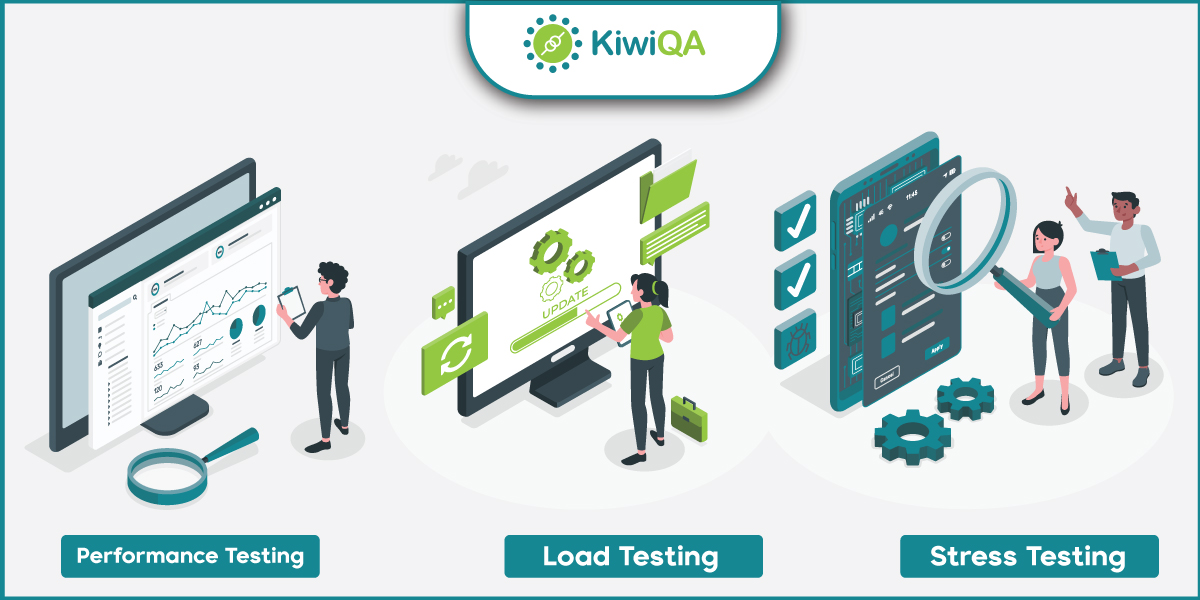Software testing is an integral part of any form of software development. It goes without saying that software consisting of even a few LOC (Lines of Code) must be thoroughly tested for its functionality. Conducting any form of testing might not suffice to test the functionalities of the product.
Though developers have the responsibility of running unit level tests; there is a high probability that functionalities might falter when integrated with other software modules. Functional and non-functional tests have to be performed to ensure that the product is top-notch from all the relevant angles (i.e. performance, functionality, etc.).
For large-scale applications, it is important to test the features at different load levels to ensure that there is no performance degradation if there is any increase in the server load. Imagine, an e-commerce website witnessing page timeouts when their customers try buying from the platform during the holiday season sale 🙁
This is where performance testing and load testing becomes extremely important. It makes business sense to onboard a performance testing company that has expertise with performance testing. In this blog, we look at the differences between the three major forms of testing approaches:
- Stress Testing
- Performance Testing
- Load Testing
There is a thin line of difference between these testing methodologies, the understanding of which is important to prioritize the right type of testing.
What Is Load Testing?
Response time, stability, and reliability are the key KPIs (Key Performance Indicators) that can be achieved by running load tests. As a developer and tester, you might agree that certain issues (e.g. memory leaks, performance degradation, etc.) can only be witnessed when the product features are tested at scale.
There is a difference between testing an app with 100 users (or transactions) vis-à-vis testing the app with a million concurrent users. This is where load testing is instrumental, as it helps understand the behavior of the app (or website) under expected loads.
Example of Load Testing
A testing scenario where extra 1000 concurrent requests hit the application every few seconds (e.g. 45 seconds). The number of concurrent requests are steadily increased based on the expected load for the app. Once the expected load is reached, developers and testers start analyzing the potential issues related to CPU, RAM, memory, and more.
Issues related to increased loads are rarely evident from the beginning of the app journey, making load tests an absolute necessity once the app witnesses a massive surge in user base.
Popular Tools for Load Testing
Since there are a plethora of tools for performing load testing, you should choose a tool that suits your requirements.
Here is a list of some widely used load testing tools:
- Apache JMeter
- Load Ninja
- LoadView
- WebLOAD
- Silk Performer
The choice of load testing tool purely depends on the scope and complexity of the project.
Also Read: Importance of Application Load Testing for Business Success
What Is Performance Testing?
Performance testing can be loosely termed as the combination of load testing and stress testing. As the name indicates, it helps in testing the system’s performance and monitoring its behaviour when the system is under stress.
Akin to load testing, performance testing is also primarily used for testing the system from a reliability, stability, scalability, and performance perspectives. Performance tests measure the CPU load and memory usage for different requests. Since the system is tested against different loads, it helps in determining the error rate; along with providing an analysis on the frequency of the occurrence of the error rates.
Performance testing does not verify the functionalities; rather it verifies the performance of the application (under different loads). At the end of a rigorous performance testing strategy, you can expect an application that is free from performance bottlenecks.
The type of performance tests can vary from project to project, however it is a recommended practice to test the website (or application) performance under different testing environments (e.g. platforms, devices, desktops, etc.).
Example of Performance Testing
Performance testing is tightly linked to the functional requirements. In an e-commerce website (or app), the shopping cart’s functional requirement could be simultaneous handling of 10,000+ requests without any degradation of performance.
Performance tests for the said functionality will test the shopping cart feature by injecting 10,000+ requests to unearth any performance bottlenecks.
Popular Tools for Performance Testing
There is an intersection of tools when it comes to load testing and performance testing. Hence, a lot of load testing tools also make it to the performance testing category.
Here is a curated list of best performance testing tools:
- Apache JMeter
- Testing Anywhere
- Load Complete
- Rational Performance Tester
- LoadView
- Loadster
Apart from these select tools, there are many other performance testing tools like WebLoad, LOADNinja,EggPlant, etc. Consulting an expert QA vendor like KiwiQA that provides performance testing services can be beneficial in choosing the best-suited performance testing tool.
Also Read: Jmeter Vs LoadRunner: Which One Is Better for Performance Testing?
What Is Stress Testing?
There is a very thin line of difference between load testing, performance testing, and stress testing. They all look the same since we refer to performance, load, stress, and other such factors in all of them 🙂 However, the motive of all these testing methodologies is entirely different.
Stress testing is a testing approach that is majorly used for detecting the breaking point of the application. What this means is that the approach helps in detecting the maximum load that can be handled by the application.
Once the specified limit is reached, the system will start witnessing performance deterioration. Stress tests help in building a more robust and scalable application.
Example of Stress Testing
We again take the example of an e-commerce application. Consider the shopping cart functionality which can handle maximum 10,000+ simultaneous requests. Once this particular stress limit is reached, the application starts experiencing performance issues.
Hence, stress testing must be accommodated to test the robustness of the application.
Comparison: Load Testing vs. Performance Testing vs. Stress Testing
Let’s look at the advantages of each of these testing approaches to drill down at the differences between them.
Benefits of Load Testing
Here are the salient advantages of using load testing:
- Helps reduce the risk of application failure by figuring out the maximum load that can be handled by the application.
- Helps improve the stability and reliability of the application.
- Deep dives into the integral aspects related to memory usage, CPU consumption, and other such vital parameters that can impact the applications’ performance.
Also Read: Performance Testing of Microservices
Benefits of Performance Testing
Here are some of the salient benefits of using performance testing:
- Helps measure the application performance under normal loads.
- Helps identify performance bottlenecks, which when resolved will be instrumental in building a more robust application.
- Helps measure the stability of the application.
Benefits of Stress Testing
Here are some of the salient benefits of using stress testing:
- Helps evaluate the robustness and scalability of the application.
- Helps identify the breakage point (or peak load) at which the application will start witnessing degradations.
Based on what we have discussed so far, this is how the three testing approaches stack up against each other:
- Load Testing verifies how the application performs under a certain load. Like performance tests, load tests can also be instrumental in identifying the performance bottlenecks. This helps in improving the application’s behaviour when it is addressed to a certain load.
- Performance Testing accumulates the essentials of load testing and stress testing. The metrics identified using performance testing help in improving the response time, stability, and reliability of the application.
- Stress Testing helps identify the breaking point of the application. Once the point is reached, the performance of the application is expected to witness slowness. The end-goal of stress testing is to improve the robustness of the said application.
Also Read: Key Performance Metrics for Effective Performance Testing
Conclusion
No one form of testing is enough to test the website (or application) from all the necessary perspectives. A bad (or degrading) performance can act as a deal-breaker for any application.
This is why stress testing, load testing, and performance testing are important for building a more robust and scalable application. KiwiQA has immense experience in providing performance testing services and its experience can be leveraged in building more scalable and reliable applications.













Comments are closed.